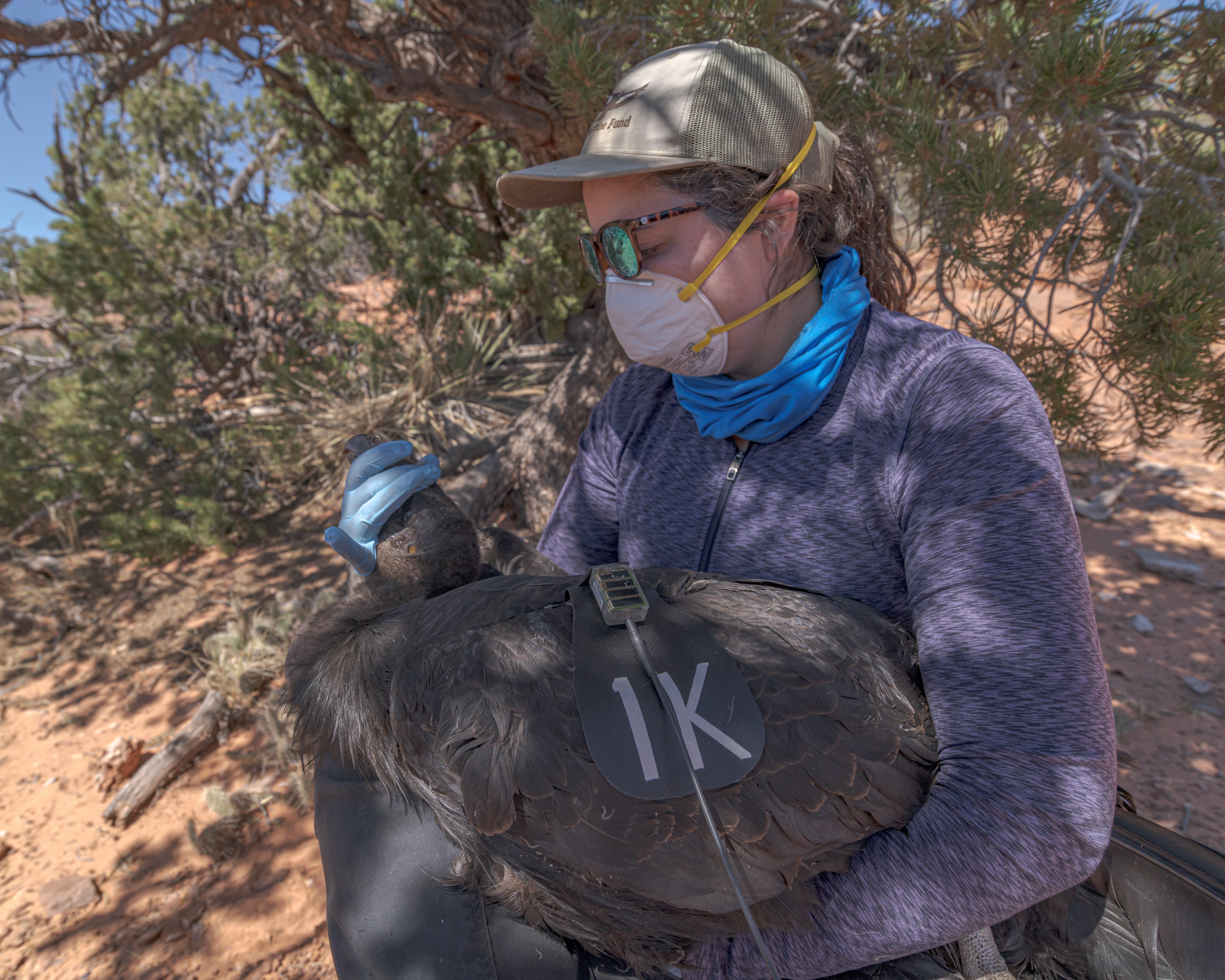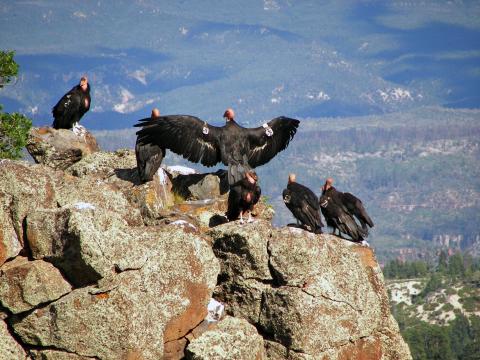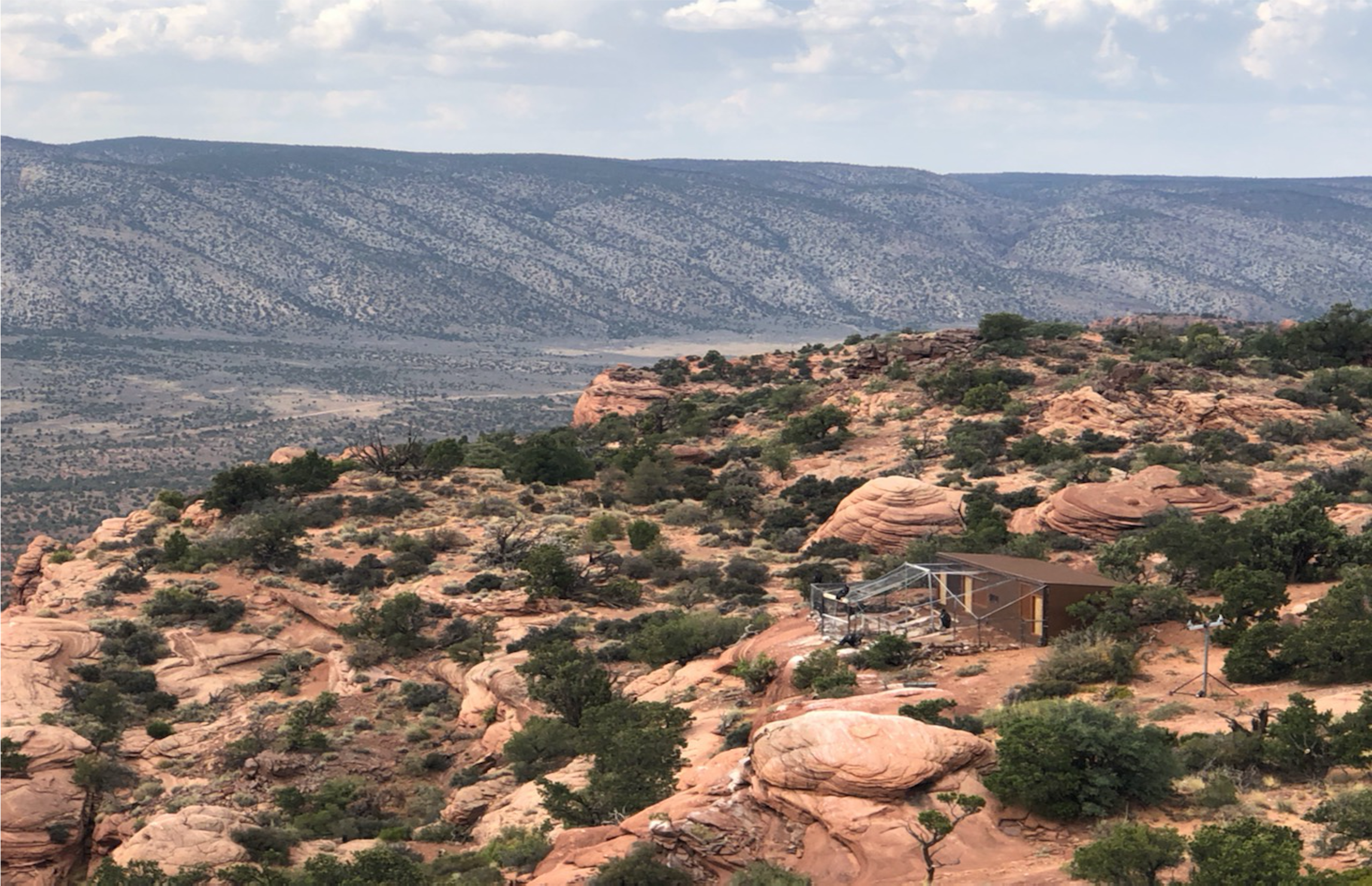
A conservationist tends to "1K," the first successful fledgling condor in Zion National Park -- an emblem of the species' growing recovery. / The Peregrine Fund
Fostering A Thriving Condor Population In Zion National Park
A far-reaching and effective partnership has greatly improved the prospects for this endangered species.
By Kim O’Connell
It’s a sight not quickly forgotten: a black-plumed California condor, its impressive wing span over nine feet, soaring along the striated sandstone cliffs of Zion National Park in southern Utah before landing on a rocky perch or nesting site high above a canyon floor.
It’s also a sight that’s becoming more common, thanks to an ongoing and successful captive breeding and release program that has forged a small but growing population in Zion and elsewhere. Although the condor is designated as an endangered species, the uptick in numbers—and especially the successful hatching and fledgling of a wild condor chick in the park in 2019, who has been dubbed “1K” because it was the 1,000th hatchling since captive breeding began in the 1980s—conservationists are hopeful that the species’ long-term prospects are improving.
Three decades ago, it was an entirely different story. Once known throughout the West (the Lewis and Clark expedition reported having seen and hunted them), California condors were extinct in the wild by 1987, with only 22 individuals existing in captivity. The main culprits were lead poisoning, pollution, hunting, and habitat loss—all issues that remain today.
What’s changed, however, is that there are now more than 500 individual condors in total, including about 300 in the wild. The wild population includes, at last count, 109 individuals in Zion. The recovery effort involves numerous federal, state, and private partners, including the National Park Service, the Zion National Park Forever Project (the park’s nonprofit partner), zoos where captive breeding occurs, and natural resource and game departments in Utah and Arizona.
Leading the effort is the Peregrine Fund, a nonprofit conservation organization that is headquartered at the World Center for Birds of Prey in Boise, Idaho, and operates a condor facility at Vermilion Cliffs National Monument in northern Arizona. Once birds arrive there from breeding facilities, they are tagged and prepared for release into the canyon country that stretches from northern Arizona into southern Utah.

Condors gather at Zion National Park / NPS photo
Once released, the main challenges are monitoring the birds and keeping them alive, according to Janice Stroud-Settles, wildlife program manager for Zion. In addition to coordinating with volunteers to gather data on the birds, Stroud-Settles works to ensure that construction projects or other park activities don’t attract condors (such as by creating standing water or leaving behind trash).
“Being the park, the habitat is naturally here and provides everything they need,” she says. “It’s the lead in the environment that’s causing the main problem right now.”
Because condors are largely carrion feeders, they ingest lead-based ammunition left behind in hunted animal carcasses. Lead poisoning causes a range of problematic symptoms including disorientation, respiratory distress, dehydration, and kidney and liver damage, as well as death. For a chance at survival, poisoned birds must undergo chelation therapy, which removes heavy metals from the bloodstream.
Tim Hauck, condor reintroduction program manager for the Peregrine Fund, stresses the importance of the multi-state, interagency partnership behind the condor project and adds that the hunting community is an essential partner as well.
“We know we have to get the amount of lead down, so these birds can thrive,” Hauck says. “That’s really the limiting factor. If there was no lead in the landscape I think we could step aside and let these birds do what they’re going to do and be successful.”
Hauck adds that the local hunting community has generally responded positively to incentives and alternatives to lead-based ammunition, and that outreach efforts about lead impacts on condors and other raptors are hitting their marks.
“Most of the hunters in this landscape are conservationists,” Hauck says. “I think hunters get a bit of a bad rap. We’re pro-hunting because it provides a good food source for the birds.” He adds that condors have likely benefited from the human hunting and consumption of animals since humans first entered the scene.
In addition, significant support for this project came from Wild Tribute, a national-park-themed apparel company whose “4 the Parks” program donates 4% of its proceeds to park projects. Wild Tribute donations paved the way for three important steps, according to Zachary Almaguer, communications manager for Zion Forever: sourcing GPS tag collars so that the birds can be monitored, capturing 1K to determine its sex (male), and building a custom pen for the birds at Vermilion Cliffs to replace one that badly needed upgrading.
“1K, which was the first chick to hatch and fledge successfully in the park, really became an ambassador of the recovery process,” Almaguer says. “When you spot that unmistakably large wing span, it’s incredible. Having that animal ambassador generated excitement among the public. Condors are not out of the woods, but it’s great having organizations like Wild Tribute step up and make sure that our dollars are put to the highest and best use.”
As for 1K, he’s already been spotted branching out, flying farther away from where he was born. “He’s crossing into new territory,” Almaguer says. “We hope he will live a normal and happy adult life.” Hopefully, many more will follow him, too.
This article is made possible in part with support from WildTribute.com.

The recently upgraded condor facility at Vermilion Cliffs National Monument, a BLM unit. / The Peregrine Fund





